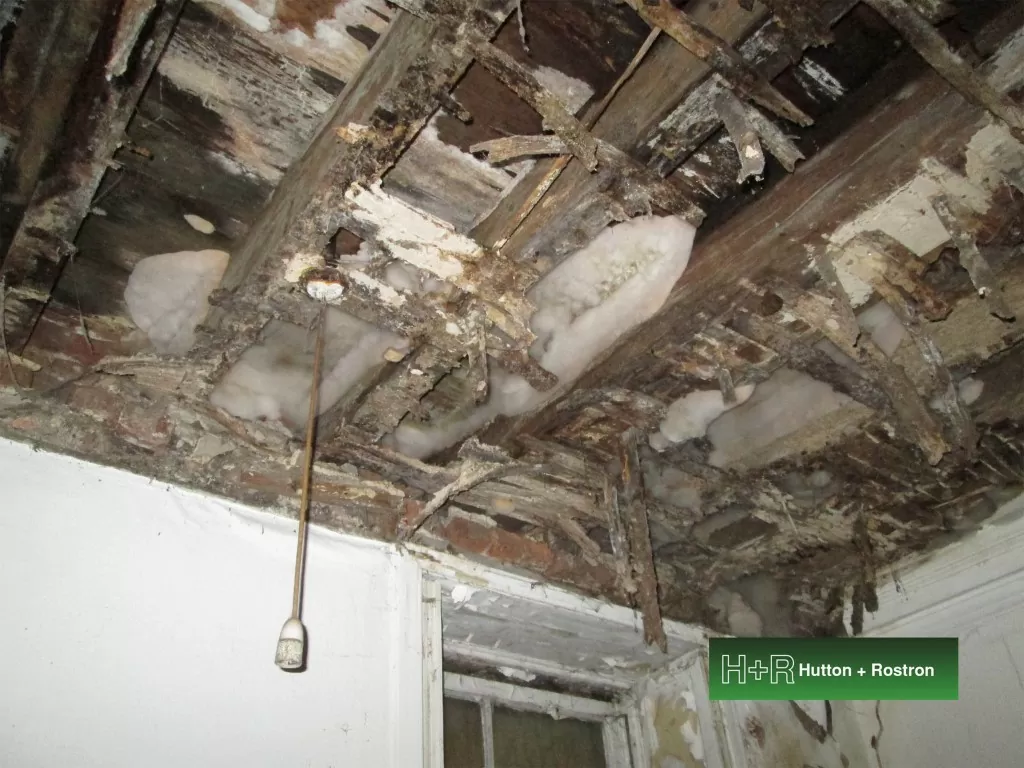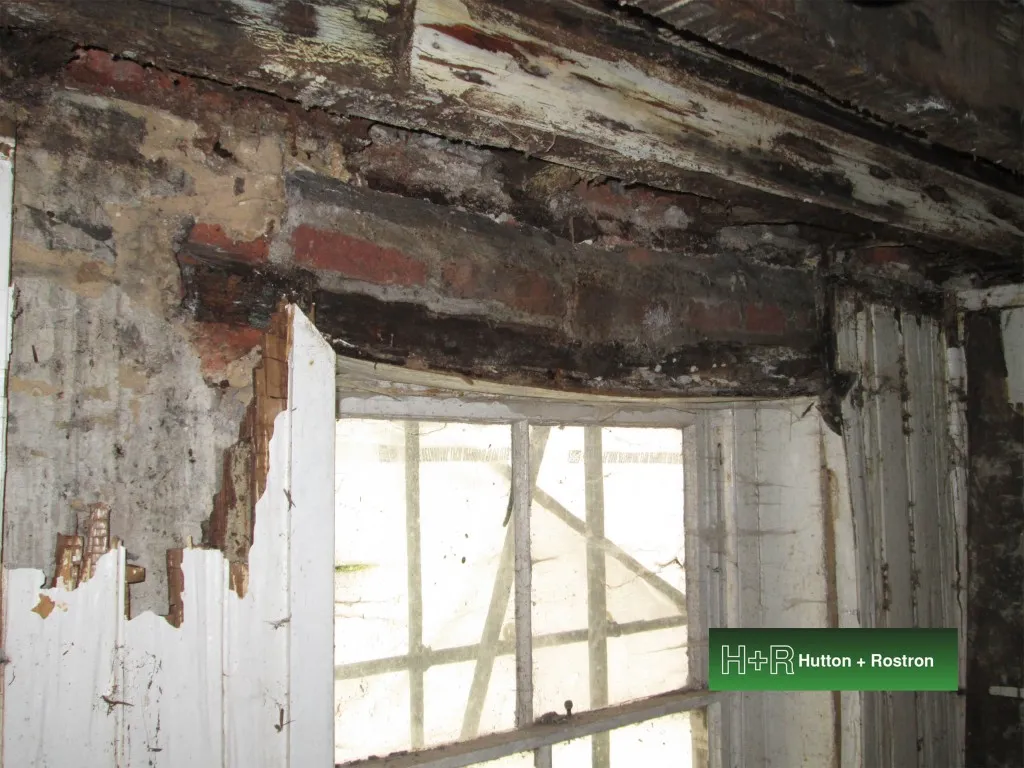Timber Decay Survey on Abandoned Harefield Hospital
The Problem
After being abandoned in the late 1990s, Harefield House suffered from thieves stealing the lead from the roof. This left the interior open to rainwater and resulted in the building rapidly decaying.
The structural integrity of the building was in doubt and it was feared it could collapse if left to further decay. H+R were approached to carry out a timber decay survey with recommendations for future mothballing of the property.

“[H+R are] the experts and EH (English Heritage) listen to what they say.”

The Solution
Due to the widespread decay, parts of the building were deemed too unsafe and so H+R’s survey was limited to accessible structures only. H+R found that the historic water penetration had saturated areas of masonry and timber throughout.
Wet rot was found on nearly all timber structures, affecting the sapwood but had not so far progressed to the heartwood. Historic dry rot was found in areas and H+R believed the dry rot would continue to grow during the drying down of the structure.
Areas of brickwork above decayed timber lintels were often found to have settled into an informal brick arch structure. While this was averting collapse it would be inadequate in the future.
H+R carried out moisture profiles of the building to monitor drying down of the structure. No chemical remedial timber treatments or wall irrigations were required.
H+R concluded that further investigation was needed of all the identified decayed structures which would be carried out after they had been propped and made safe.
As a follow up, H+R carried out a preliminary timber decay survey to provide information for QS and Planning purposes.
Case Study Gallery



